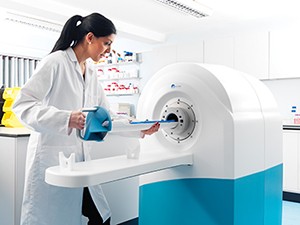Imaging Technology Partnership Accelerates Biomedical Research in Australia
The University of Sydney is preparing to acquire advanced MRI (Magnetic Resonance Imaging) technology that will expedite their preclinical and translational medicine research capabilities. The Universitys core research facility in biomedical imaging, known as Sydney Imaging, will soon receive the first of two preclinical MRI systems.
The systems will provide researchers with access to the latest MRI imaging technology. These instruments will enhance their biomedical research capability in areas such as oncology, neurology, embryology, regenerative medicine and cardiology. This capability will accelerate the translation of fundamental research into clinical trials.
The systems are being purchased from MR solutions as part of a technology collaboration which includes local distributor AXT Pty Ltd.
Professor Simon Ringer, Academic Director of Core Research Facilities at the University of Sydney explained, Excellence in research is increasingly linked to excellence in infrastructure capability. This is what our core research facility program is all about. Our goal is to build world-class research facilities supported by a team of academic, technical and business staff who will manage these platforms. Partnerships with the leading vendors, such as MR Solutions, are essential to that plan.
Recognising the critical importance of imaging science and technology in biomedical research, the University recently established Sydney Imaging to operate as the peak biomedical imaging facility for the University. The staff and instrumentation are situated at various sites across the campus in a hub-and-spoke model centred around the Charles Perkins Centre (CPC). These facilities are accessible to all researchers.
This university-industry partnership involves the installation of a large bore 7 Tesla MRI system as well as a smaller bore 3 Tesla MRI system (1 Tesla is 31,000 greater than the earths magnetic field). The cryogen-free 7 Tesla wide bore system for preclinical imaging will put Sydney Imaging at the forefront of medical imaging research.
The 7T MRI system will be located at the Universitys CPC, which hosts a number of the Universitys core research facilities. The CPC is an ideal location for the instrument as it brings together researchers from various disciplines to work on obesity, cardiovascular and diabetes related research. Globally, the emerging research agenda in this space is linked to insights gained from imaging technology.
The unique nature of the design of these MRI systems enables easier compatibility with other imaging modalities. Because the MRIs are a dry magnet design, they require no liquid helium for operation and therefore no expensive liquid helium cooling. This results in lower running costs and a more compact design.
Advanced design features also mean that there are no special room requirements unlike traditional MRI systems. For instance, there is no need for shielding or Faraday cages to be engineered into the room design as is generally the case with MRIs.
Dr David Taylor, CEO and director of MR Solutions said, I am delighted to be providing our advanced MRI technology to Sydney Imaging at the University of Sydney. We are excited not only for the wonderful research that will be conducted using our MRI systems, but also in partnering with Sydney Imaging to advance MRI science.
Richard Trett, Managing Director at AXT added, We are particularly pleased to be able to provide the MR Solutions advanced MRI technology to the Australian scientific community and in particular into a core research facility at the University of Sydney.
MR Solutions has recently been acknowledged for their development and subsequent commercial success of cryogen-free MRI systems. On July 19, they were bestowed the prestigious Queens Award for Enterprise (Innovation) at a ceremony at Buckingham Palace.
Posted July 25, 2016
Preclinical MRI system featuring cryogen-free superconducting magnets from MR Solutions.


